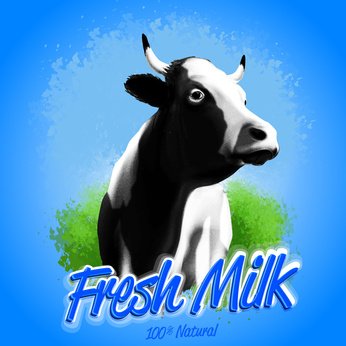If I eat a vegan diet, what about my calcium intake?
Calcium is very important in bone development. However, this is not the whole picture. There are many other vitamins such as vitamin D, K and A that are essential to bone development. It is unclear how much calcium we need in our diet. Guidelines recommend 1000mg of calcium per day. We often think about cow’s milk when we think about the main source of calcium. That conception needs to be changed.
Many of us are sensitive to the milk and have a “milk allergy” or “milk sensitivity.” We believe these dairy products trigger a leaky gut.[i] As dairy products enter the gut, the tight junctions break and the breakdown products of milk enter the bloodstream. Our immune system is activated and our bodies develop immune complexes that start attacking parts of the body. In some people, the joints are affected and they develop rheumatoid arthritis. In others, it is the pancreas islet cells that are attacked and they develop Type I diabetes. In others it is lupus, vitiligo (loss of pigment in the skin) or multiple sclerosis. This immune system activation triggers oxidative stress and inflammation. We know that chronic inflammation is a risk for heart disease and cancer. Inflammation is also a trigger for bone breakdown. Then suggesting that we humans drink more milk to decrease fracture risk is a “conceivable contradiction.” [ii]
There are many studies now that suggest a link between increased dairy and cardiovascular risk.[iii],[iv] In a follow-up to the these initial mouse studies, an extensive review was conducted to evaluate humans and milk intake, and one of the studies in the review evaluated people who drank more than three glasses of milk per day versus those who drank fewer than one glass per day. The research found a dose-dependent higher fracture and higher death rate in women who drank more milk.
In the 12-year Nurses’ Health Study, nurses who drank more than two glasses of milk per day had no fewer fractures than those nurses consuming less than one glass of milk per week.[v] Interestingly, in that same Nurses’ study, those who consumed greater amounts of calcium from dairy foods had higher fracture risk. That increased risk was not seen with calcium from non-dairy sources.[vi]
This is really important. In other corroborating research, a meta-analysis of multiple larger trials showed there was no decrease in hip fractures with calcium supplementation.[vii] This means that taking calcium supplements did not decrease rate of fractures. There may even have been a slightly higher fracture risk in people taking calcium supplements who didn’t get adequate vitamin D.
Let’s consider the occurrence of fractures around the world. In countries such as India, Japan and Peru, calcium intake is less than one-third of the daily recommended allowance (300mg per day), and the risk of fractures in those countries is extremely low. The countries with the highest fracture risks are actually those where people drank an abundance of milk, namely Norway, Sweden, Iceland, Denmark and the USA. These studies suggest that maybe drinking milk is not all it’s cracked up to be!
Calcium is definitely important in our diet but it is not the only part of the picture. Don’t get hung up on calcium. Eliminating animal protein has been shown to decrease the necessary calcium requirements. We need vitamins A, D, and K in order to make bones along with our calcium. Most green vegetables have calcium and vitamins A and K! Vitamin D, on the other hand, often requires supplementation because we don’t absorb enough natural sunlight, the source for vitamin D.
Calcium comes from many non-dairy sources, including broccoli, kale, collard greens, turnip greens, bok choy, almonds, sunflower seeds, tahini, dried beans and blackstrap molasses. Flax seeds and sesame seeds are two more great sources of calcium.[viii] Calcium in low-oxalate vegetables such as kale is readily absorbed, so they are viable options for calcium intake in a plant-based diet.[ix]
[i] Deopurkar R, Ghanim H, Friedman J, Abuaysheh S, Sia CL, Mohanty P, Viswanathan P, Chaudhuri A, Dandona P. Differential effects of cream, glucose, and orange juice on inflammation, endotoxin, and the expression of Toll-like receptor-4 and suppressor of cytokine signaling-3. Diabetes Care, May 2010; 33(5): 991-7
[ii] Michaëlsson K, Wolk A, Langenskiöld S, Basu S, Lemming EW, Melhus H, Byberg L
Milk intake and risk of mortality and fractures in women and men: cohort studies. BMJ 2014; 349: g6015.
[iii] Sonestedt E, Wirfalt E, Wallstrom P, Gullberg B, Orho-Melander M, Hedblad B. Dairy products and its association with incidence of cardiovascular disease: the Malmo diet and cancer cohort. Eur J Epidemiol2011; 26: 609-18
[iv] Huth PJ, Park KM. Influence of dairy product and milk fat consumption on cardiovascular disease risk: a review of the evidence. Adv Nutr2012; 3: 266-85
[v] Feskanich D, Willett WC et al., Milk, dietary calcium, and bone fractures in women: a 12-year prospective study. Am J Pub Health; June 1997, Vol. 87. No. 6
[vi] Feskanich D, Williett WC et al. Milk, dietary calcium and bone fractures in women: a 12-year prospective study. AM J Pub Health, 1997; 87 (6): 992-7
[vii] Bischoff-Ferrari HA, Dawson-Hughes et al. Calcium intake and hip fracture risk in men and women: a meta analysis of prospective cohort studies and randomized control trials. Am J Clin Nutr, 2007; 86(6): 1780-90
[ix] Heaner RP, Weaver CM. Calcium absorption from kale. AJCN 1990; 51: 656-7
If I eat a vegan diet, what about my calcium intake? Read More »



